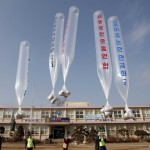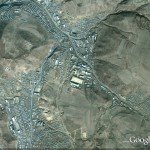North Korea has created a new military body, the 10th Corps of the Chosun People’s Army, charged with security and order in Yangkang Province.
An inside source reported to The Daily NK on the 15th, “The foundation of the Yangkang Province 10th Corps was ratified in September in the name of the National Defense Commission Chairman,” and added, “Accordingly, the construction of the Corps Headquarters has been completed in the Chundong area of Hyesan.”
Hitherto, the 10th District Command of the Local Reserve Forces, a civilian reserve force, provided local protection in Yangkang Province. Its military strength was obviously inferior to that of North Hamkyung Province, which it neighbors. North Hamkyung Province has been guarded by the 9th Corps stationed in Chongjin on the east coast since it was created in 1995.
Even though the specific details of the makeup of the new 10th Corps have not emerged, it seems to consist of the 42nd Brigade (No. 1551 Base) stationed at Samsoo and the 43rd Sniper Brigade (No. 682 Base) at Gapsan, and brigades of the Local Reserve Forces in Pungsan and Wunheung. Additionally, and importantly, officers from the 9th Corps have been transferred to fill higher positions.
The source explained, “The number of enlisted soldiers increased during spring recruitment, but the number of officers was still inadequate, so the corps was formed with officers transferred from the 9th Corps. However, housing for military officers has not been completed yet, so there are still many living apart from their families.”
The Daily NK reported exclusively in September 2009 that the National Defense Commission was planning to reinforce the 10th District Command with 10,000 additional soldiers.
The source explained the possible background to the founding the 10th Corps, saying, “In fact, the value of military strength in Yangkang Province has dropped more than people think. Considering the fact that major strategic facilities such as Samjiyeon Airport, Samjiyeon Missile Base, Baekam Radar Base and Huchang Missile Base are all here, Local Reserve Forces are not sufficient to cover provincial defense.”
He added, “There is significance in the foundation of the 10th Corps, in that defense of a strategic position has been reinforced, and moreover may have the effect of coping with possible Chinese military moves which actually could occur,” and went on, “It might also have been a measure reflecting the concern which Pyongyang has had since its first nuclear test, whereby, ‘We don’t know when China will betray us.’”
Now, the North Korean military consists of nine official corps: the 1st Corps stationed in Hoiyang, Kangwon Province, 2nd in Pyongsan, North Hwanghae Province, 4th in Haeju, South Hwanghae Province and 5th in Pyeonggang, Kangwon Province, which cover the DMZ and the front line; and the 3rd Corps in Nampo, 7th in Hamheung, South Hamkyung Province, 8th Corps in Youngju, North Pyongan Province, 9th in Chongjin, North Hamkyung Province and the newly created 10th in Hyesan, Yangkang Province, which are in charge of rear defense.
As previously noted, the 6th Corps has not existed since shortly after an attempted coup in North Hamkyung Province in 1995.
Each corps consists generally of one or two combat brigades, three or four mechanized brigades and several battalions.
Besides these, there are special corps disguised as “training centers” in order to draw a veil over the reality, which is that in practice their military power is much greater than that of the general corps. While the first obligation of the general corps is local defense, these training centers are designed to push into the South.
Among the best known of these “training centers” are No. 425 Training Center stationed in Jungju, South Pyongan Province, No. 806 in Muncheon, Kangwon Province, No. 815 in Seoheung, North Hwanghae Province, No. 820 in Sariwon, North Hwanghae Province and No. 620 in Shinkye, North Hwanghae Province.
Additionally, there is the “Artillery Bureau” which conducts artillery attacks, “Education Bureau” designed to penetrate the rear of enemy lines, and “No. 91 Training Center”, Pyongyang Defense Command, which is charged with defending the capital.


